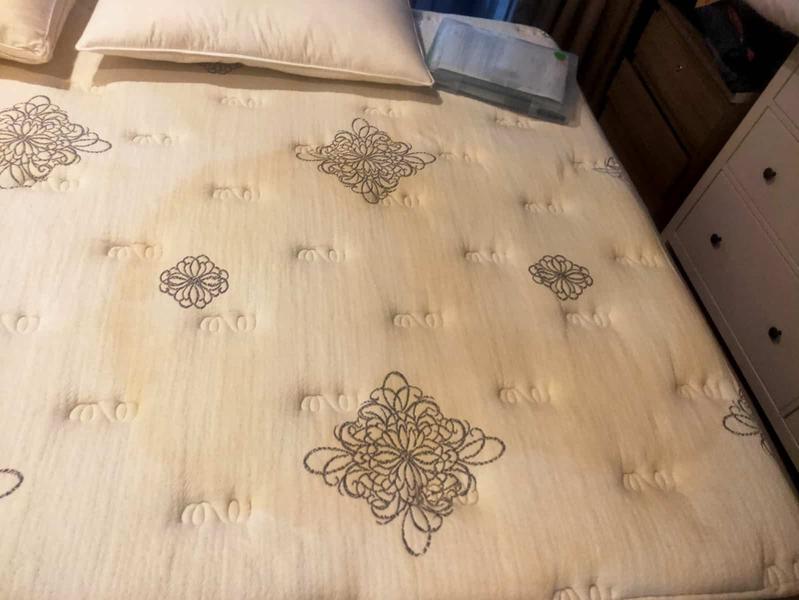RAVE FabriCARE: Position Papers
Share this Position Paper:
Dry cleaning solvents and fluids: An introductory guide
By: Stu Bloom
Very briefly, there are 5 major components to a dry cleaner’s service: cleaning, finishing (aka pressing), inspecting, repairing and packaging.
The dry cleaning solvent or fluid used in the cleaning process is probably the most critical part of the cleaning component.
There are primarily 6 dry cleaning solvents or fluids in use today:
Perchloroethylene (aka perc)
Perchloroethylene, a chlorinated solvent, is the most common dry cleaning solvent in use today. Used by approximately 70% of the 26,000 cleaners in the USA, perc (brand name: Dowper from Dow Chemical and PerSec from Occidental Chemical) is valued for its grease-cutting properties.
Any uniform rental operation specializing in auto repair shops would definitely want to clean in perc.
In recent years, perc has been attacked by governmental agencies, scientific bodies and environmentalists as a potential human carcinogen as well as a ground water and air pollutant. Perc has been scheduled for phase out in California by the year 2023.
By contrast, advocates for perc have argued that perc, used in accordance with existing environmental laws and regulations, is perfectly safe.
The debate over perc is on-going and contentious with a wealth of scientific and anecdotal evidence supporting both sides of the debate.
But health and environmental safety is not our beef with perc.
Our concern is that perc is a relatively fabric aggressive, dye stripping solvent. Way too damaging for the bespoke, made-to-measure, designer, high fashion, specialty and couture garments in which we specialize.
Synthetic petroleum
About 20% of cleaners use synthetic petroleum, a hydrocarbon solvent that’s a byproduct of the manufacture of gasoline (brand name: DF 2000 from Exxon Mobil Chemical or EcoSolv from Conoco Phillips Chemical).
Synthetic petroleum is often falsely marketed as an “organic, green, non-toxic and environmentally friendly alternative to perc”.
Here’s why synthetic petroleum should never be considered organic, green, non-toxic and environmentally friendly: While synthetic petroleum is relatively more gentle on your fine garments and household textiles than perc, it is, nonetheless, subject to the same federal, state and local environmental laws and regulations as perc, both in how it’s used and how it’s disposed of.
From a health and environmental point of view, hydrocarbon dry cleaning solvents are volatile organic compounds (VOCs). VOCs contribute to the formation of ozone, which, in turn, has been linked to various respiratory complications.
Many cleaners that use synthetic petroleum like to refer to themselves as “organic cleaners”.
They argue that synthetic petroleum is technically “organic” because it contains carbon.
But nuclear waste and coal slurry are also technically “organic” because they contain carbon and no rational individual would argue that nuclear waste and coal slurry is “organic”.
There is a whole lot of irony here as well.
Many cleaners who have converted from perc to synthetic petroleum in the past 15 years love to malign perc: “We use synthetic petroleum, the good cleaning solvent, not perc, the bad cleaning solvent.
Really?
Here’s what dry cleaners who use synthetic petroleum don’t want you to know: If synthetic petroleum can be called “organic” just because it contains carbon, then perc can also be called “organic” because it too contains carbon.
And here’s what dry cleaners who use synthetic petroleum can’t answer: If synthetic petroleum is “organic, why is it subject to the same federal, state and local environmental laws and regulations as perc in terms of how it’s used and how it’s disposed of?
To suggest that synthetic petroleum is organic in the same way that a fruit or vegetable is organic is deceptive and misleading.
Actually, it’s more than that.
It’s a scam, a fraud and a hoax on the general public.
Formaldehyde dibutyl acetal
Coming soon.

Siloxane
Fewer than 5% of all cleaners use siloxane (brand name: Green Earth from General Electric Silicones, Dow Corning Silicones and Shin Etsu Silicones).
Siloxane is
Contrast this to perc, synthetic petroleum or formaldehyde dibutyl acetal.
In the event of a major spill,a cleaner using siloxane will need a bucket and a mop. In the event of a major spill, a cleaner using perc, synthetic petroleum or formaldehyde dibutyl acetal will need to summon your Fire Department’s Hazardous Materials Unit.
From a health point of view, first aid measures for siloxane state that no action is required when siloxane comes into contact with skin or is inhaled or ingested. This differs markedly from first aid measures for perc, synthetic petroleum or formaldehyde dibutyl acetal solvents (typically, wash, flush and consult a physician).
Pure liquid carbon dioxide
At room temperature and normal atmospheric conditions, carbon dioxide (CO2) is a colorless and odorless gas. When subjected to high pressure in a closed vessel such as a high pressure dry cleaning machine, CO2 transforms into a liquid. This is the principle behind CO2 cleaning.
Although CO2 is a naturally occurring and generally benign substance, there are relatively few pure CO2 installations in North America (less than 50).
That’s because
From an environmental point of view, pure liquid carbon dioxide is a volatile organic compound (VOC) that contributes to global warming.
Another problem is that it’s cost prohibitive to operate a pure liquid carbon dioxide dry cleaning machine. So much so that Cool Clean Technologies, the only manufacturer of pure liquid carbon dioxide dry cleaning machines (amongst many other products), has been a no show at every dry cleaning trade show for at least the past 6 years.
Hybrid glycol ether/liquid carbon dioxide
Hybrid glycol ether/liquid carbon dioxide is a variation on the pure liquid CO2 dry cleaning process and takes place in a machine manufactured by Solvair.
Instead of being cleaned in pure liquid CO2, your garments and household textiles are first cleaned in Dipropylene Glycol normal Butyl Ether (aka DPnB), what Solvair calls their “biodegradable cleaning liquid”.
After being cleaned in glycol ether (because pure liquid CO2 is such a poor cleaning agent), your garments and household textiles are rinsed in pure liquid CO2 and dried when the liquid CO2 converts to a gas and the gas is extracted from the system.
According to the EPA, glycol ether is a suspected neuro-toxin, respiratory-toxin and kidney-toxin.
From an environmental point of view, hybrid glycol ether and pure liquid carbon dioxide are volatile organic compounds (VOCs) that contributes to global warming.
Another problem is that it’s cost prohibitive to operate a glycol ether/liquid carbon dioxide dry cleaning machine. So much so that Solvair, the only manufacturer of glycol ether/liquid carbon dioxide dry cleaning machines is long out of business. You cannot buy a new glycol ether/liquid carbon dioxide dry cleaning machine today.
Water
Let’s not forget that water is the oldest “solvent”. Water is often used in combination with dry cleaning to ensure that both water-based and soils and oil-based stains are removed from garments and household textiles.
Today, this water-based process is often called wet cleaning.
It is important to note, however, that wet cleaning is not “washing”.
Even the most technologically advanced home washing machines or professional shirt washers cannot match the capabilities of today’s specialized, computer-controlled wet cleaning equipment, where micro-processors control water temperature, cylinder speeds, mechanical action and moisture removal.
What does all this mean for you?
Now that you know the specific solvents or fluids used in dry cleaning today, it’s important to find out three things from your cleaner:
In answering these questions, forget about popular terms such as natural, sustainable, biodegradable, non-toxic, essentially non-toxic, practically non-toxic, EPA approved, non-regulated, non-ozone depleting, ozone friendly, ozone safe, VOC free, environmentally friendly, environmentally safe, environmentally preferable, environmentally superior, earth friendly, earth safe, eco friendly, eco safe, green, organic, alternative, or any other similar name your dry cleaner and/or his advertising agency can conjure up.
A ton of words that, in most cases, mean absolutely nothing.
It’s important to recognize that many cleaners use these terms to intentionally confuse or obfuscate, not to educate or enlighten. That many cleaners are purposely ambiguous about the dry cleaning solvent or fluid they use (they just don’t want you to know). And that some clean in perc and claim to clean in synthetic petroleum, while others clean in perc or synthetic petroleum and claim to clean in siloxane.
To discover this for yourself, view the website of any cleaner and try to identify the specific solvent or fluid used by that cleaner. We’d bet that 9 times out of 10 it’s undisclosed.
Now, ask yourself why?
There’s an even better way to identify the actual solvent or fluid used by a dry cleaner. Every county has an air quality control department that regulates the use of perc, synthetic petroleum and formaldehyde dibuyl acetal solvents by dry cleaners in that county.
Call them and ask for a copy of your dry cleaner’s operating permit. The solvent they use will be right there – in black and white. (In the metro Phoenix area, call the Maricopa County Air Quality Department at 602-506-6201).
By the way, you won’t find our permit on file at the Maricopa County Air Quality Department. As a dry cleaner who uses siloxane dry cleaning fluid, we’re exempt from all permitting, inspecting and record keeping requirements.
Knowing the specific solvent or fluid used, its properties and it’s impact is critical to cutting through the fog of confusing terms in the dry cleaning marketplace.
Share this Position Paper:
Filed Under:
Dry Cleaning,Position Paper
Author
Stu Bloom
Stu Bloom is Founder and President of RAVE FabriCARE. RAVE FabriCARE, based in Scottsdale, Arizona, cares for fine garments, household textiles and accessories and serves clients throughout the USA and Canada. Stu is the author of various ebooks on these subjects, all of which are available from www.ravefabricare.com/freestuff. He is an evangelist for true quality cleaning and is a contributor to and editor of True Quality Cleaning, RAVE FabriCARE’s blog. You can find Stu on Twitter, Google+ and LinkedIn.
Comment on this Position Paper:
Subscribe Notify of0 Comments Inline FeedbacksView all commentsSign up to receive our Position Papers:
Did you find this Position Paper informative? Subscribe today to receive our position papers delivered straight to your inbox. We'll never share your email. No spam. Unsubscribe whenever you want.
Sign up to receive our quarterly newsletter:
Get tips, ideas and information you can use. Subscribe today to receive our quarterly newsletter, the RAVEreview® delivered straight to your inbox. We'll never share your email. No spam. Unsubscribe whenever you want.
Looking for more great resources?
Check out our Resource Library for over 60 expert Ebooks, Position Papers (short discussions) and White Papers (longer in-depth discussions) spanning all aspects of caring for your fine garments, household textiles and accessories.
Connect with us:
Copyright © 2023 furnitureknowledges.com. All rights reserved.







